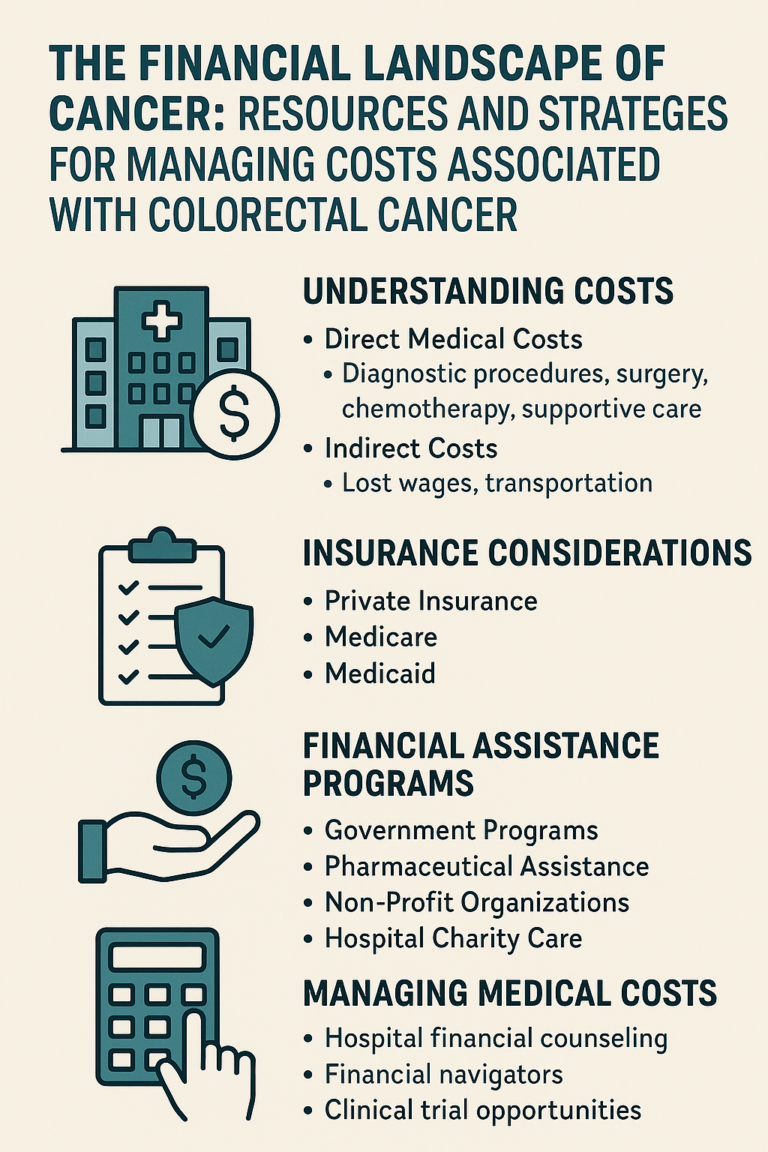Book Appointment Now

Hairy Cell Leukemia: Comprehensive Guide to Diagnosis, Treatment, and Prognosis
1. Introduction
1.1 Definition of Hairy Cell Leukemia
Hairy Cell Leukemia (HCL) is a rare, indolent B-cell neoplasm characterized by the presence of malignant B lymphocytes with distinctive “hairy” projections on peripheral blood smear. First described in the 1950s, it was classified by the World Health Organization (WHO) as a distinct clinical entity. HCL is known for its typically slow progression, unique clinical features, and exceptional responsiveness to specific therapies, particularly purine analogs.
1.2 Epidemiology
HCL accounts for approximately 2% of all adult leukemias. The estimated annual incidence is around 0.3 to 0.4 cases per 100,000 individuals in Western countries, translating to roughly 600–800 new cases per year in the United States. Men are affected more frequently than women, with a male-to-female ratio of approximately 4:1. The median age at diagnosis is in the mid-50s, although it can present across a wide age range.
Despite its rarity, HCL often garners significant clinical interest due to its unique biology, favorable long-term outcomes (compared to other leukemias) and notable therapeutic advances over the past few decades.
2. Etiology and Pathogenesis
2.1 Molecular Mechanisms
A hallmark discovery in HCL pathogenesis was the identification of the activating BRAF V600E mutation, present in over 90% of classic HCL cases. This mutation leads to constitutive activation of the RAS-RAF-MEK-ERK signaling pathway, promoting malignant B-cell proliferation and survival. Additional genetic aberrations (e.g., in MAP2K1) have also been detected, especially in variants of HCL (HCLv).

Medical illustration of the BRAF V600E mutation.
Immunophenotypically, the malignant cells in HCL express surface markers characteristic of memory B cells, including CD19, CD20, and CD22. They also show unique expression of CD11c, CD25, CD103, and CD123, which aids in both diagnosis and in some cases therapeutic targeting.
2.2 Genetic and Environmental Factors
While the majority of HCL cases appear to be sporadic, there are reports of familial clustering, suggesting a possible genetic predisposition. Research continues to investigate whether certain inherited polymorphisms or genetic profiles increase susceptibility.
Environmental exposures such as agricultural pesticides, industrial chemicals, or ionizing radiation have been hypothesized to play a role, but conclusive data are limited. Overall, HCL remains an uncommon disorder with no definitive, widely confirmed etiologic factor beyond the well-established BRAF V600E mutation.
2.3 Pathophysiology
In HCL, neoplastic B cells accumulate in the bone marrow, spleen and peripheral blood. Due to the robust expression of adhesion molecules (e.g., CD11c) and stromal interactions, these cells cause extensive marrow fibrosis. This often results in a “dry tap” during bone marrow aspiration and contributes to varying degrees of pancytopenia. Splenomegaly, a central feature of HCL, results from massive infiltration by malignant cells, which can also lead to hypersplenism.
3. Clinical Presentation
3.1 Common Symptoms and Signs
Patients often present with nonspecific complaints, such as fatigue or malaise, related to anemia. Infection risk is increased due to neutropenia and bleeding tendencies can arise from thrombocytopenia. Splenomegaly is one of the most consistent clinical findings, leading to abdominal discomfort or early satiety.
3.2 Physical Examination Findings
- Splenomegaly: Palpable in the majority of patients.
- Hepatomegaly: Less common than splenomegaly, but it can be present.
- Lymphadenopathy: Rare in classic HCL, but may be more prominent in variant forms.
3.3 Laboratory Findings

A highly detailed microscopic image of a peripheral blood smear showing malignant B lymphocytes characteristic of Hairy Cell Leukemia (HCL). The cells exhibit distinctive ‘hairy’ cytoplasmic projections, which are a hallmark of the disease. The sample is stained with a hematological dye to enhance contrast, making the abnormal cells more visible. The background is a dark microscope slide, emphasizing the high-magnification focus on the atypical lymphocytes. The image is scientifically accurate, with realistic cellular textures and details.
- Peripheral Blood Smear: Characteristic malignant lymphocytes with hair-like cytoplasmic projections.
- Complete Blood Count (CBC): Pancytopenia (low white cells, hemoglobin, platelets) in many patients.
- Biochemical Tests: Mild abnormalities in liver function tests may be noted if there is hepatic involvement.
4. Diagnosis
4.1 Initial Laboratory Tests
A CBC with differential is the first step. The suspicion of HCL is often raised by the presence of atypical lymphocytes on the peripheral smear.
4.2 Bone Marrow Examination
In Hairy Cell Leukemia (HCL), bone marrow aspiration often results in a dry tap due to extensive reticulin fibrosis, which prevents the collection of a liquid sample. Consequently, a core biopsy is usually required to evaluate the extent of bone marrow infiltration by the characteristic malignant cells.
Tartrate-Resistant Acid Phosphatase (TRAP) Staining was historically an essential diagnostic test for HCL, as TRAP positivity supports the diagnosis. However, its clinical use has declined due to the widespread adoption of immunophenotyping (via flow cytometry) and molecular assays (such as BRAF V600E mutation testing), which offer greater specificity and reliability.
4.3 Flow Cytometry and Immunophenotyping
Flow cytometric analysis remains the gold standard for diagnosing HCL. The neoplastic B cells usually express CD11c, CD25, CD103 and CD123, in addition to pan-B-cell markers (CD19, CD20, CD22). These markers help distinguish HCL from other B-cell disorders, such as splenic marginal zone lymphoma or mantle cell lymphoma.
4.4 Molecular Markers
The detection of the BRAF V600E mutation is highly specific for classic HCL and has important therapeutic implications. Molecular assays (e.g., real-time PCR or next-generation sequencing) can identify this mutation in the majority of cases, confirming the diagnosis and guiding the use of BRAF inhibitors in relapsed or refractory disease.
5. Classification and Staging
5.1 Subtypes of Hairy Cell Leukemia
- Classic Hairy Cell Leukemia (HCL)
- Defined by the presence of the BRAF V600E mutation
- Typically associated with marked monocytopenia
- Strong expression of CD25, CD103, and CD123
- Hairy Cell Leukemia Variant (HCLv)
- Usually lacks the BRAF V600E mutation
- Exhibits a more aggressive clinical course
- Often shows weaker CD25 expression
- Patients may present with leukocytosis and less pronounced monocytopenia
5.2 Differentiation from Other Leukemias
The differential diagnosis includes splenic marginal zone lymphoma, mantle cell lymphoma with splenic involvement and chronic lymphocytic leukemia (CLL) with atypical morphology. Key distinguishing factors are the immunophenotypic profile and presence or absence of hallmark genetic aberrations.
5.3 Staging and Prognostic Factors
While there is no formal “stage” like in Hodgkin lymphoma or solid tumors, disease extent (degree of marrow infiltration, splenic size and blood counts) provides prognostic insight. Additional factors such as the presence of the BRAF mutation (highly correlated with classic HCL and favorable response to therapy) and overall tumor burden can guide therapeutic decisions.
6. Treatment Options
6.1 Conventional Therapies
Purine Analogs (Cladribine and Pentostatin)
- Cladribine (2-CdA): Often administered either as a continuous infusion or weekly subcutaneous injections over several weeks. This treatment achieves overall response rates of over 90%, with the majority of patients attaining long-lasting complete remissions.
- Pentostatin (DCF): Another effective agent that leads to comparable response rates, although it is less commonly used than cladribine in many centers.
6.2 Immunotherapy
Rituximab
- A chimeric monoclonal antibody directed against CD20, used either as a single agent or, more frequently, in combination with purine analogs to enhance the depth of remission. Rituximab-containing regimens are particularly valuable in relapsed or refractory disease.
6.3 Targeted Therapy
- BRAF Inhibitors (e.g., Vemurafenib, Dabrafenib): In patients harboring the BRAF V600E mutation, BRAF inhibitors can induce substantial responses when purine analogs fail or when patients experience multiple relapses.
- MEK Inhibitors: Occasionally combined with BRAF inhibitors to overcome resistance in refractory cases.
These targeted therapies underscore the shift toward personalized medicine in HCL, especially for patients with mutations or suboptimal responses to standard therapy.
6.4 Stem Cell Transplantation
Allogeneic or autologous stem cell transplantation is rarely needed due to the high efficacy of purine analogs and targeted therapies. Transplant may be considered in extremely rare, refractory cases or in patients with variant HCL who do not respond to conventional and targeted treatments. However, data on transplantation outcomes in HCL are limited.

Medical illustration of a stem cell transplantation process.
6.5 Other/Emerging Treatments
- Interferon-α (IFN-α): Historically a cornerstone treatment before the advent of purine analogs, now primarily reserved for pregnant patients or those with significant contraindications to chemotherapy.
- Novel Monoclonal Antibodies: Agents targeting CD22 or CD123 are under investigation.
- Combination Approaches: Trials combining BRAF inhibitors with anti-CD20 antibodies or other immunotherapeutic strategies are ongoing, aiming to prolong remissions and prevent resistance.
7. Prognosis and Survival
7.1 Response Rates and Remission Durations
The introduction of cladribine (2-CdA) in the late 1980s revolutionized HCL treatment, achieving complete remission (CR) rates of 80–90% after a single course of therapy. Most patients experience prolonged remission durations exceeding 10 years, with some remaining disease-free for decades. Pentostatin, another purine analog, demonstrates similar efficacy, making both agents the standard of care for first-line treatment.
Minimal residual disease (MRD) assessments via flow cytometry or molecular testing (e.g., BRAF V600E detection) can help predict relapse risk and guide follow-up strategies. Studies suggest that patients with undetectable MRD after treatment have a significantly lower risk of relapse.
7.2 Relapse and Refractory Disease
Despite high initial response rates, approximately 30–40% of patients eventually experience relapse, often 5–10 years after initial treatment. Relapsed HCL remains highly treatable:
- Re-treatment with purine analogs (cladribine or pentostatin) often induces a second remission with similar efficacy.
- For patients with multiple relapses or refractory disease, treatment options include:
- Immunochemotherapy (e.g., cladribine plus rituximab) to improve depth and duration of response
- BRAF inhibitors (vemurafenib, dabrafenib), particularly in patients with BRAF V600E-positive disease
- BTK inhibitors (ibrutinib), which show promise in refractory cases
- moxetumomab pasudotox, an anti-CD22 immunotoxin approved for relapsed/refractory HCL
Refractory disease, defined as lack of response or progression despite purine analogs, is rare but challenging. Next-generation targeted therapies are under investigation, offering hope for better disease control in this subset of patients.
7.3 Long-Term Outcomes and Follow-Up
With effective therapy, the median overall survival (OS) for HCL patients now exceeds 20–30 years, approaching that of the general population. However, long-term follow-up is crucial, as some patients develop late complications, including:
- Cytopenias (persistent neutropenia, anemia, or thrombocytopenia) due to residual bone marrow involvement
- Secondary malignancies, reported in 5–10% of HCL survivors, possibly related to prior immunosuppressive therapy (e.g., cladribine-induced lymphopenia)
- Opportunistic infections, particularly in patients with prolonged neutropenia or hypogammaglobulinemia
- Autoimmune complications, including vasculitis, thyroid dysfunction, and AIHA (autoimmune hemolytic anemia)
7.4 Monitoring Strategies
Regular follow-up visits should include:
- Complete blood count (CBC) every 3–6 months to detect early relapse
- Physical examination with a focus on lymphadenopathy and splenomegaly
- Bone marrow biopsy (if MRD monitoring is needed)
- Molecular testing for BRAF mutations in relapsed cases to guide targeted therapy selection
In selected patients, prophylactic antimicrobials (e.g., trimethoprim-sulfamethoxazole for PCP prophylaxis) may be considered, particularly in those with prolonged lymphopenia.
7.5 Long-Term Management and Future Perspectives
Hairy Cell Leukemia is now considered a highly treatable disease with excellent long-term survival rates, thanks to advances in chemotherapy, immunotherapy, and molecular-targeted treatments. However, lifelong monitoring remains essential to manage late complications, secondary malignancies, and relapsed disease. Future research into novel agents and personalized treatment approaches will further refine management strategies and improve patient outcomes.
8. Future Perspectives
8.1 Emerging Therapies
A growing understanding of HCL biology has spurred the development of novel agents targeting the B-cell receptor (BCR) signaling pathway (e.g., BTK, PI3K inhibitors), immunomodulatory molecules and checkpoint inhibitors. While most are still in preclinical or early clinical stages for HCL, their success in other B-cell malignancies positions them as promising candidates.
8.2 Ongoing Research and Clinical Trials
Collaborative groups, including the Hairy Cell Leukemia Consortium, continue to sponsor clinical trials evaluating combinations of BRAF inhibitors with MEK inhibitors, novel monoclonal antibodies and emerging immunotherapies such as CAR-T cells. The National Cancer Institute (NCI) and other research organizations actively recruit patients with relapsed or refractory disease to explore these experimental protocols.
8.3 Potential Biomarkers and Personalized Medicine
Molecular diagnostics—especially next-generation sequencing—are being used to identify additional mutations that could influence treatment decisions and detect minimal residual disease (MRD). This approach allows clinicians to tailor therapies based on each patient’s genetic profile, potentially improving outcomes and minimizing toxicity.
9. Conclusion
Hairy Cell Leukemia remains a distinct and fascinating entity within the spectrum of B-cell leukemias. The discovery of the BRAF V600E mutation has catalyzed a new era of targeted treatment strategies, supplementing the already high success rates seen with purine analogs. While most patients achieve durable remissions, a subset requires innovative therapies, highlighting the necessity for ongoing research and clinical trials. Optimal management of HCL relies on multidisciplinary collaboration among hematologists, oncologists, pathologists and researchers, ensuring that patients benefit from the latest advancements in diagnostics and therapeutics.
10. References
- Grever MR, Abdel-Wahab O, Andritsos LA, et al. Advances in hairy cell leukemia: Diagnosis and therapy. Hematology Am Soc Hematol Educ Program. 2020;2020(1):301–306.
- Tiacci E, Trifonov V, Schiavoni G, et al. BRAF mutations in hairy-cell leukemia. N Engl J Med. 2011;364(24):2305–2315.
- NCCN Clinical Practice Guidelines in Oncology (NCCN Guidelines). Hairy Cell Leukemia. Version 1.2024. National Comprehensive Cancer Network.
- Swerdlow SH, Campo E, Harris NL, et al. WHO Classification of Tumours of Haematopoietic and Lymphoid Tissues. Revised 4th Edition. IARC Press; 2017.
- Troussard X, Cornet E, Hairy Cell Leukemia Group of the French Society of Hematology. Hairy cell leukemia 2022: Update on diagnosis, risk stratification, and treatment. Leuk Lymphoma. 2022;63(8):1838–1847.
- Else M, Dearden CE, Matutes E, et al. Long-term follow-up of patients with hairy cell leukaemia after treatment with purine analogs. Br J Haematol. 2009;145(6):733–740.
- Seymour EK, Tam CS, Owen CJ, et al. Targeted therapy in hairy cell leukemia: BRAF inhibition and beyond. Blood Rev. 2020;44:100679.
Disclaimer: This article is provided for educational and informational purposes only and should not be considered a substitute for professional medical advice, diagnosis, or treatment. Management decisions should be made based on each patient’s individual clinical presentation, medical history, and comorbidities, in consultation with current evidence-based guidelines (e.g., NCCN, ESMO, ASH). Healthcare providers are encouraged to exercise clinical judgment and refer to specialized hematology/oncology experts when necessary. Patients should always seek the advice of their physician or qualified healthcare professional regarding any medical condition or treatment decisions.



